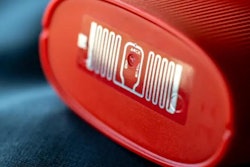Welcome to Sustainable Packaging Explained — your guide to sustainable materials, methods, and package design, produced by the Emerging Brands Alliance in conjunction with Packaging World.
Today we’re looking at sustainable e-commerce packaging. In 2020, during the height of the pandemic, e-commerce shopping increased 55%, and by 2022 U.S. e-commerce sales topped $1 trillion dollars for the first time. Since most online purchases require secondary packaging to get the product safely to the consumer, there is concern over the environmental impact of this excess packaging material.
For brands that ship direct to consumer, primary packaging may be designed for e-commerce shipping. Another consideration for e-commerce packaging is tertiary packaging, which refers to packaging materials used by freight companies to send the product to warehouses, such as cartons, bubble wrap, and shrink wrap.
So, you mentioned primary, secondary, and tertiary packaging. And one of the main objectives of sustainability and packaging is removing these extra layers. Packaging layers can vary completely based on the product that's there. So, food and beverage products, for example…the primary packaging is often the bottle or the pouch or the cup, it's that first layer of packaging that's really doing the work of containing and preserving the product. Secondary packaging may be something for retail display or it may be like a case for wholesale. Either way, designing for sustainability is about placing the protection in the appropriate place and at the necessary amounts. If I have a product that's sold almost exclusively in stores and is shipped direct to consumer, maybe 5% of the time, the retail packaging needs to be minimized and there needs to be protective packaging for shipping. However, if I'm selling something that is almost exclusively direct to consumer, making it ready to ship in its primary packaging is often the goal. We need to also consider multi-item orders and things like that when we weigh out our options. So, if we can design better primary packaging or sometimes secondary packaging, we can often avoid that last layer of packaging that is added for shipping, or at least lightweight it…think like gift wrapping, on a box.
Recent innovations such as packaging made from mushroom mycelium, or seaweed-based materials that decompose, are providing alternatives to traditional packaging materials. And innovations in compostable plastics that break down into natural components over time are continuing to develop.
CPG brands are embracing these innovations and crafting strategies to package sustainably for e-commerce by working closely with packaging suppliers and logistics partners to optimize packaging for both protection and sustainability, using biodegradable plastics, and right-sizing packages to reduce waste and carbon emissions during transportation. Using mailers that can be re-used for returns is also a more sustainable option.
So you brought up some really great materials. And when we look at these emerging materials like mycelium or seaweed, or things like just different compostable materials and films, we need to consider the surroundings of our consumer. If we sell products locally to consumers that have access to composting, then composting is really a great option for them. Or even in environments like stadiums or theme parks where we kind of can control what's happening and direct that packaging into composting streams. If we're creating materials that look and act like plastic in an environment where consumers are taught to recycle, however, we can actually start to end up with contamination where these non-recyclable plastics are getting thrown into the bin with recyclable plastics and, and in some cases not getting sorted out. So mycelium, let's just take that for an example. If people aren't familiar, it's like a mushroom foam. It's grown. It’s a really cool material. It is costly, but it's a great option to consider if you need a foam like product maybe in a place where everything gets thrown away. I was on a construction site recently where they're not recycling stuff, they're just tossing it all into a big dumpster and something that can just break down and degrade in a landfill environment or whatever is really a great option. And then you have something like seaweed or PVA, which is a water-soluble film, PVA can be great options where brands are looking for materials that can dissolve away or even be consumed. You know, some of the seaweed packaging can be eaten and consumed with the product. So ultimately there's a lot of factors to consider when looking to make packaging more sustainable no matter what we choose though we need to inform and educate consumers about these decisions and what we are asking them to do with the packaging.
There are pros and cons to sustainable e-commerce packaging. Reduced carbon footprint, improved brand reputation, and customer loyalty are all positive outcomes as consumers become more mindful of their purchases, and sustainable packaging can set brands apart.
On the ‘con’ side, initial costs may be higher, and there is a need to ensure that sustainable or innovative e-commerce packaging offers the same protective capabilities as traditional options. It is always best to perform a life-cycle analysis of a product to determine the best packaging solution for your situation.
Thanks for watching and be sure to subscribe to our YouTube channel for more videos on packaging and scaling operations. And join us at the Emerging Brands Alliance for year-round resources to grow your brand.
























